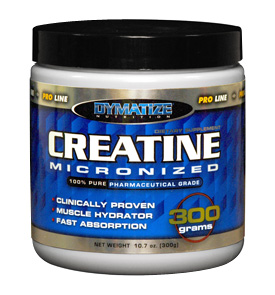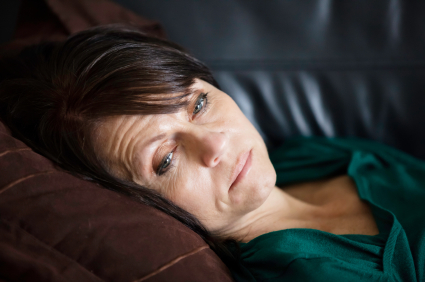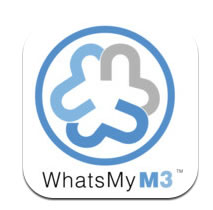Published: August 7, 2012
University of Utah
Women battling stubborn major depression may have a surprising new ally in their fight—the muscle-building dietary supplement creatine.
 In a new proof-of-concept study, researchers from three South Korean universities and the University of Utah report that women with major depressive disorder (MDD) who augmented their daily antidepressant with 5 grams of creatine responded twice as fast and experienced remission of the illness at twice the rate of women who took the antidepressant alone. The study, published Aug. 3, 2012, in the American Journal of Psychiatry online, means that taking creatine under a doctor’s supervision could provide a relatively inexpensive way for women who haven’t responded well to SSRI (selective serotonin reuptake inhibitor) antidepressants to improve their treatment outcomes.
In a new proof-of-concept study, researchers from three South Korean universities and the University of Utah report that women with major depressive disorder (MDD) who augmented their daily antidepressant with 5 grams of creatine responded twice as fast and experienced remission of the illness at twice the rate of women who took the antidepressant alone. The study, published Aug. 3, 2012, in the American Journal of Psychiatry online, means that taking creatine under a doctor’s supervision could provide a relatively inexpensive way for women who haven’t responded well to SSRI (selective serotonin reuptake inhibitor) antidepressants to improve their treatment outcomes.
“If we can get people to feel better more quickly, they’re more likely to stay with treatment and, ultimately, have better outcomes,” says Perry F. Renshaw, M.D., Ph.D., M.B.A, USTAR professor of psychiatry at the U of U medical school and senior author on the study.
If these initial study results are borne out by further, larger trials, the benefits of taking creatine could directly affect many Utahns. The depression incidence in Utah is estimated to be 25 percent higher than the rest of the nation, meaning the state has an even larger proportion of people with the disease. This also brings a huge economic cost to both the state and individuals. [continue reading…]
ᔥSubstance Abuse and Mental Health Administration (SAMHSA)

A new report shows that the percentage of girls who experience a major depressive episode in the past year triples between the ages of 12 and 15 (from 5.1 percent to 15.2 percent respectively). The report by the Substance Abuse and Mental Health Services Administration (SAMHSA) also shows that an annual average of 1.4 million adolescent girls age 12 to 17 experienced a major depressive episode in the past year. In addition, the report reveals that adolescent girls aged 12 to 17 are three times more likely to have experienced a major depressive episode in the past year than their male counterparts (12 percent versus 4.5 percent).
A major depressive episode is defined using criteria set forth in the Diagnostic and Statistical Manual of Mental Disorders (DSM-IV) developed by the American Psychiatric Association. Under this definition, a major depressive episode is when a person experiences a period of depressed mood or loss of interest or pleasure for two weeks or longer and also experiences at least four other symptoms that reflect a change in functioning, such as problems with sleep, eating, energy, concentration and self-image.
“It is crucial that we provide adolescent girls the coping skills and social supports they need to avoid the onset of depression, and to offer behavioral health services that foster resilience and recovery if they experience it,” said SAMHSA Administrator Pamela S. Hyde. “These efforts are a sound investment in girls’ health and well-being and in our nation’s future.” [continue reading…]

Two separate studies show that clinical anxiety and depression are serious health issues all around the world
© iStockphoto
Depression and anxiety are found in every society in the world, debunking old theories that only Westerners get depressed.
These new findings come from the world’s most comprehensive study of anxiety and depression research to date, published by researchers at The University of Queensland.
In two separate studies of anxiety disorders and major depressive disorder (that is, clinical depression) study authors found that surveys of clinical anxiety and depression have been conducted across 91 countries, involving more than 480,000 people.
They show that clinical anxiety and depression are serious health issues all around the world. [continue reading…]

A 3 Minute Test for Depression, Anxiety, Bipolar Disorder and PTSD.
What is the purpose of the M3 (“WhatsMyM3”)?
The M3 website encourages individuals to complete the M3 Screen, a private, self-rated checklist for potential mood and anxiety symptoms. The checklist responses trigger a feedback page indicating each individual’s relative risk for Depression, an Anxiety Disorder, Bipolar Disorder and PTSD. The Screen responses and the resulting M3 analysis of risk may be printed, emailed, or securely accessed online by a designated health care professional, all at the discretion of the user.
The information provided by the M3 expedites and organizes a discussion between doctor and patient of relevant mental health issues at their next office visit, helping to direct the clinician toward a more accurate diagnosis. By providing parallel educational material for patients, the M3 encourages compliance and long-range follow-up of progress.
Who would benefit from completing the M3 online?
Anyone 18 years and older may complete the M3 Checklist online. Patients will benefit by being directed toward more accurate diagnosis and treatment. Physicians benefit from the M3 because poorly treated mood and anxiety disorders impede compliance with medical treatments generally, and adversely affect recovery from illness and overall medical health. Within the tight time constraints of a typical office visit, the M3 provides an algorithm for up-to-date, evidence-based treatment of mood and anxiety disorders, helping to extend effective treatment to an underserved population of patients.
ᔥTo learn more and take the test visit the MyM3 website. The MyM3 is also available as an ap
 In a new proof-of-concept study, researchers from three South Korean universities and the University of Utah report that women with major depressive disorder (MDD) who augmented their daily antidepressant with 5 grams of creatine responded twice as fast and experienced remission of the illness at twice the rate of women who took the antidepressant alone. The study, published Aug. 3, 2012, in the American Journal of Psychiatry online, means that taking creatine under a doctor’s supervision could provide a relatively inexpensive way for women who haven’t responded well to SSRI (selective serotonin reuptake inhibitor) antidepressants to improve their treatment outcomes.
In a new proof-of-concept study, researchers from three South Korean universities and the University of Utah report that women with major depressive disorder (MDD) who augmented their daily antidepressant with 5 grams of creatine responded twice as fast and experienced remission of the illness at twice the rate of women who took the antidepressant alone. The study, published Aug. 3, 2012, in the American Journal of Psychiatry online, means that taking creatine under a doctor’s supervision could provide a relatively inexpensive way for women who haven’t responded well to SSRI (selective serotonin reuptake inhibitor) antidepressants to improve their treatment outcomes.


